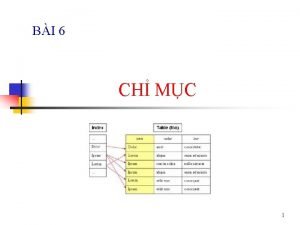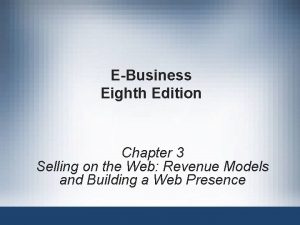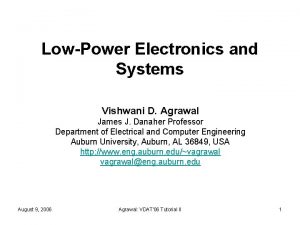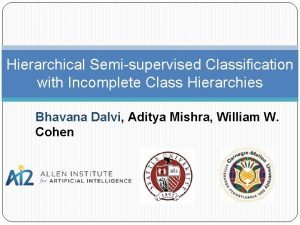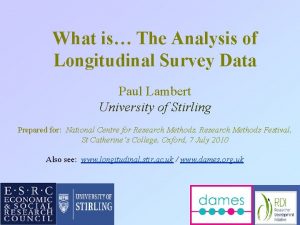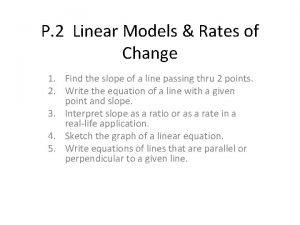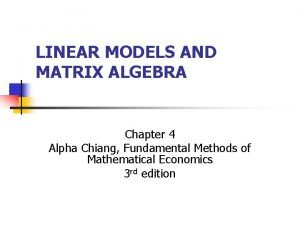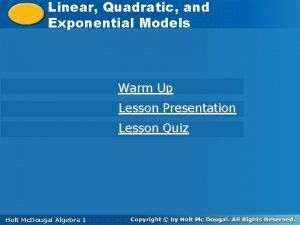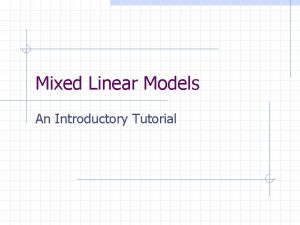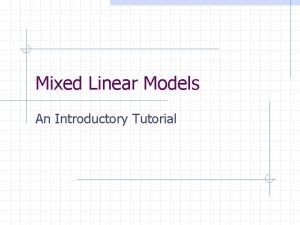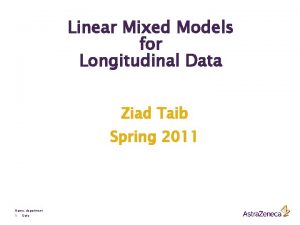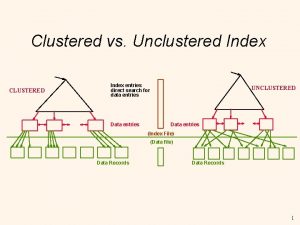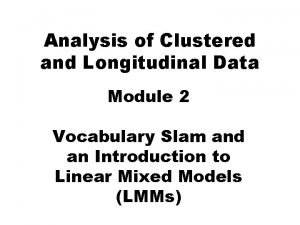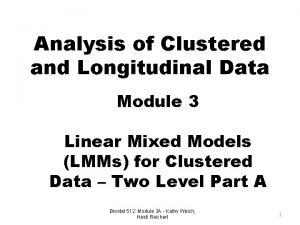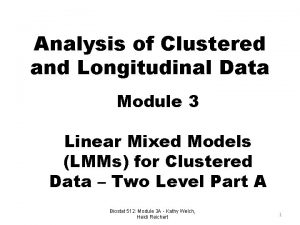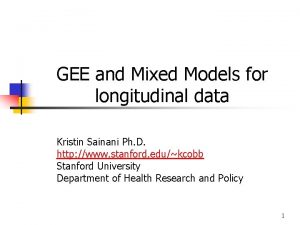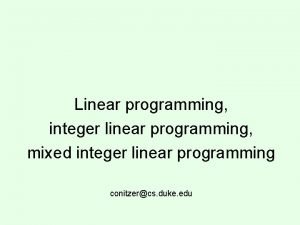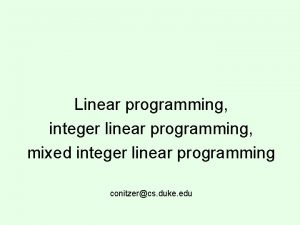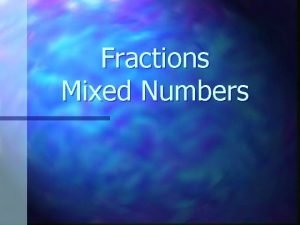Linear Mixed Models for Longitudinal and Clustered Data
















- Slides: 16

Linear Mixed Models for Longitudinal and Clustered Data 4/20/2021 Daniel Zhao, Ph. D Department of Biostatistics and Epidemiology Hudson College of Public Health University of Oklahoma Health Sciences Center

Outline • Lecture (45 min) • • • Data Model set up Estimation Prediction Interpretation • R demo (30 min) • lme 4 R package • In-class exercise (45 min) 2

Typical data suitable for LMM 1. Clustered Data (can be cross-sectional) 1. A cardiovascular study conducted on a group of families (clusters). 2. Outcomes (blood pressures) of patients from different families are independent, but from the same families are correlated. 2. Longitudinal Data (sequential in time) 1. A clinical trial to compare two medications on treating hypertension 2. Outcomes (blood pressures) from different patients are independent, but from the same patients are correlated. Note: Classical linear regression models ignoring the correlation structure will produce biased parameter estimates. 3

Example: Treatment of Lead-Exposed Children Trial • Exposure to lead during infancy is associated with substantial deficits in tests of cognitive ability • Chelation treatment of children with high lead levels usually requires injections and hospitalization • A new agent, Succimer, can be given orally • Randomized trial examining changes in blood lead level during course of treatment • 100 children randomized to placebo or Succimer • Measures of blood lead level at baseline, 1, 4 and 6 weeks 4

Table 1: Blood lead levels (μg/d. L) at baseline, week 1, week 4, and week 6 for 8 randomly selected children. 5

Table 2: Mean blood lead levels (and standard deviation) at baseline, week 1, week 4, and week 6. 6

Figure 1: Spaghetti plot of blood lead levels at baseline, week 1, week 4, and week 6 7

Figure 2: Mean profile plot of mean blood lead levels at baseline, week 1, week 4, and week 6 8

Linear Mixed Effects Model (LMM) • 9

Mean and Variance • 10

Estimation: Maximum Likelihood • 11

Prediction • 12

Model Selection for LMM • Both the mean model and covariance structure need to be selected • A practical approach is to fit a saturated mean model and use AIC or BIC to pick the best covariance structure. • Using the chosen covariance structure, find the final mean model through backward elimination 13

Handling of time in longitudinal studies • If the time points for everyone are the same (say, weeks 1, 3, 4, 5, etc) • Can treat time as a continuous variable if response is linear in time or functional form can be modeled • Otherwise, treat time as a categorical variable and specify a reference time • If the time points for everyone are not the same • Time can only be treated as continuous variable 14

R packages for LMM • foreign package, gls function: less often used. • nlme package, nlme function: can be used for nonlinear mixed effects models • lme 4 package, lmer function: most commonly used 15

Syntax of lmer function in lme 4 package • In lmer the model is specified by the formula argument. As in most R model-fitting functions, this is the first argument. • The model formula consists of two expressions separated by the ~ symbol. • The expression on the left of ~ is the response variable. • The RHS consists of one or more terms separated by `+' symbols. • A random-effects term consists of two expressions separated by the vertical bar |. • The expression on the right of the `|' is evaluated as a factor, which we call the grouping factor for that term. 16
 Clustered index và non clustered index
Clustered index và non clustered index Advertising-subscription mixed revenue model
Advertising-subscription mixed revenue model Advertising subscription mixed revenue models
Advertising subscription mixed revenue models Web catalog revenue model
Web catalog revenue model Modal and semi modal verbs
Modal and semi modal verbs Deep neural networks and mixed integer linear optimization
Deep neural networks and mixed integer linear optimization Disadvantages of nucleated settlement pattern
Disadvantages of nucleated settlement pattern Vrp
Vrp Mixed integer linear programming
Mixed integer linear programming Mixed integer linear programming
Mixed integer linear programming Mixed integer linear programming
Mixed integer linear programming Longitudinal survey data analysis
Longitudinal survey data analysis Linear and transactional model of communication
Linear and transactional model of communication Linear models and rates of change
Linear models and rates of change Linear models and matrix algebra
Linear models and matrix algebra Qm for windows linear programming
Qm for windows linear programming How to tell if a graph is linear quadratic or exponential
How to tell if a graph is linear quadratic or exponential
